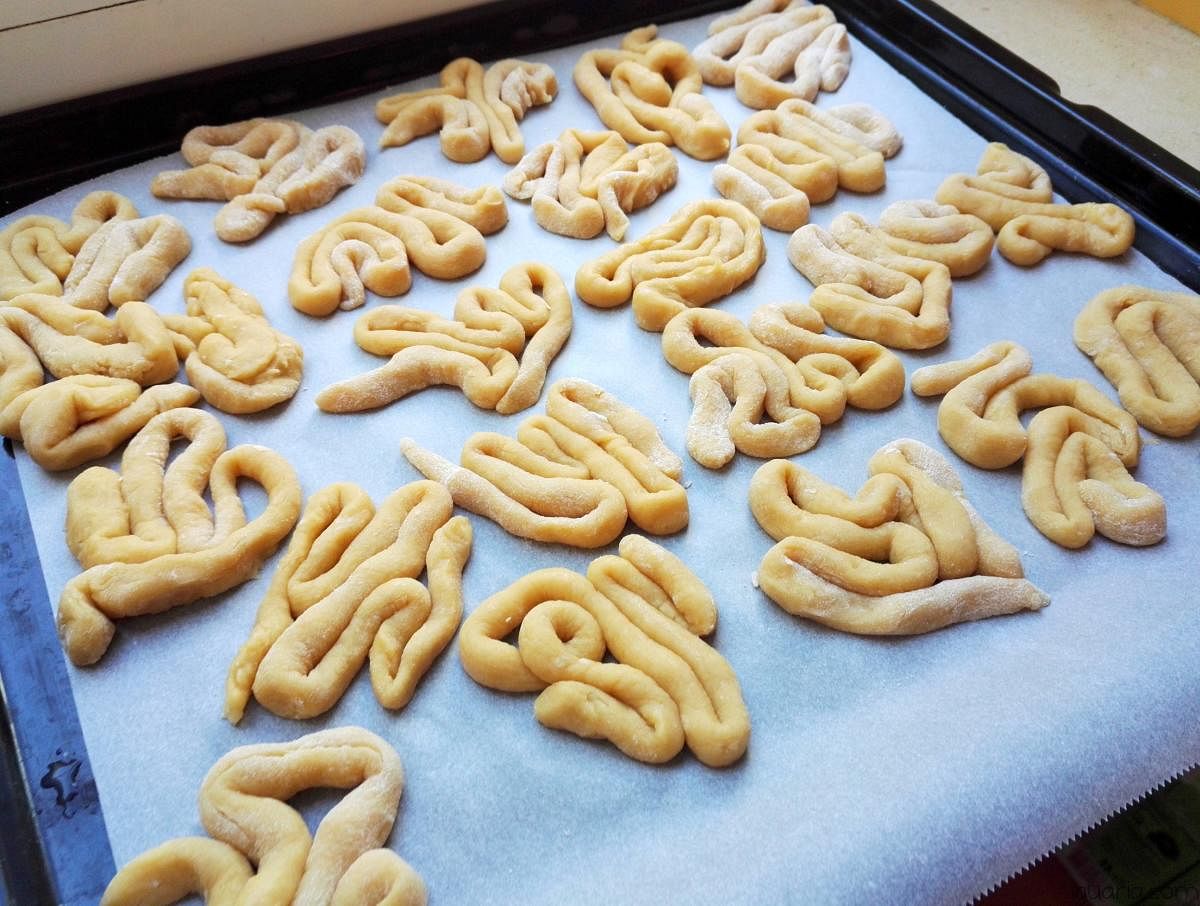
That Sunday evening, in a tea lounge located at Bogmallo Beach, Goa, it was truly a case of reliving the Portuguese-era traditions as I picked up a plate of some freshly baked soft, light brown-coloured cinnamon cookies with crispy edges from amongst an assortment of baked delights during an elaborate tea-time buffet. One of the buffet hosts said, smiling, “We call these cookies biscoitos raivas.”
Taste of tradition
Looking at my curiosity to know more about these unique and irregular-shaped cookies, the gracious host explained: “Biscoitos raivas cookies were popular tea-time delights during the Portuguese era in Goa, way back in the 15th century. Even today, for making these crispy cookies, we still adhere to the Portuguese-era techniques of making it. First, flour is mixed with ground cinnamon, beaten eggs, butter and sugar. It is then rolled into 16-inch-long rolls. We then ‘crinkle’ it, which is a unique Portuguese technique for creating biscitos raivas cookies. These are then slow-baked in the pre-heated forno colméia or a traditional Portuguese wood-fired beehive oven until they turn light brown and, of course, crispy. These are usually savoured with chá com leite, a type of Portuguese cinnamon-milk tea.”
Dutch touch
In yet another instance, Firhad, a Surat-based acquaintance who was well-conversant with techniques involved for making spiced Parsi biscuits with a Dutch influence, took out those delightful caraway- and cumin seeds-flavoured batasa biscuits from a camp Dutch oven set over a charcoal fire. They were shaped like round, puffy Dutch krenten bollens (spiced currant buns). My mind travelled back to the time when such batasa biscuits were popular amongst the Dutch settled in Surat in the 17th century.
Commenting on the batasa biscuit-making techniques, Firhad explained, “When it comes to making crispy and spiced batasa biscuits with a Dutch touch, I stick to the traditional and elaborate techniques of Parsi bakers creating batasa biscuits, just as the Dutch preferred in the 17th century . I first knead the mixture of flour, yeast, caraway and cumin seeds, butter, sugar and salt to a soft dough, allow it to puff up, then, ‘punch it down gently’ to form a flattened dough. I then make dough balls, shaping them like the round krenten bollens. Finally, I bake them to allow them to puff up again. Then as per tradition, I arrange these puffy dough balls on the greased surface of a 12-inch Dutch oven, set over a charcoal fire, cover it with a tight-fitting lid, and slow-bake the dough balls until they turn flavourful and crisp.”
Furthermore, in recent times, in a heritage tea room located in Surat, as part of traditions followed since the time of the Dutch, spiced batasa biscuits are savoured with a cup of Parsi cardamom choi (tea).
A variety on offer
It’s not just the case of biscoitos raivas or batasa biscuits. Other types of crunchy cookies or biscuits in different shapes and sizes dating back to the glorious distant past are much favoured in the recent times. Take, for example, celebration treats like the nyapsha khapsé, crispy fried milk biscuits (nyapsha refers to diamond-like shapes) which was popular during the time of the Tibetan Namgyal dynasty in Sikkim in the 17th century. In fact, at a recent Sherpa wedding in South Sikkim, the nyapsha-shaped khapsés made of flour, milk, eggs and sugar were fried to a crispy, golden-brown perfection in a pan put over a gentle flame of a traditional wood-fired clay chulha (stove) and served with po cha (butter tea).
Rich & refined
A heritage cafe located in Park Street, Kolkata, celebrated the British Raj-era heritage through the sweet, fine-textured Rich Tea biscuits, made of milk, malt and sugar along with some Darjeeling tea. According to historical records, Rich Tea biscuits were tea-time favourites of the elite British class during the time of the British Raj in Kolkata, way back in the 17th century. Interestingly enough, I noticed that in a biscuit factory in Hooghly, West Bengal, as per traditional British direct gas-fired tunnel oven baking techniques, delicate dough rounds (made of flour, milk, malt and sugar) were arranged on woven steel wire-mesh structures. They were then passed by a series of oven conveyor belts to a pre-heated box section baking chamber, and finally, there were those smooth-textured, golden-coloured Rich Tea biscuits.
Then, there are also the crunchy chand cookies, rather half-moon shaped cookies, made of flour, milk, sugar and salt. These were popular during the time of the seventh Nizam in Hyderabad in 1911. Traditionally, today, in a heritage bakery located in Hyderabad, for these cookies, the dough of flour, milk, butter and sugar is rolled into a thin sheet, then it is cut into half-moon shapes using a round cutter, and finally baked until crisp in a coal-fired oven.
The list of such innovative crunchy biscuits or cookies with a rich heritage is probably endless. Such crunchy treats would definitely complement our teatimes.